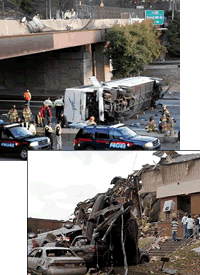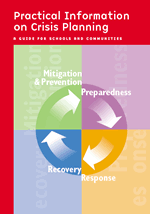School Tragedies Remind Us of Need for Preparedness

In remembering and honoring these individuals who lost their lives too soon, let us resolve to do all we can to be prepared to prevent such tragedies in the future.
One excellent resource for emergency planning for schools is PRACTICAL INFORMATION ON CRISIS PLANNING: A GUIDE FOR SCHOOLS AND COMMUNITIES published by The Office of Safe and Drug-Free Schools of the U.S. Department of Education. This 140+ page document addresses a range of events and emergencies:
- Natural disasters (earthquake, tornado, hurricane, flood)
- Severe weather
- Fires
- Chemical or hazardous material spills
- Bus crashes
- School shootings
- Bomb threats
- Medical emergencies
- Student or staff deaths (suicide, homicide, unintentional, or natural)
- Acts of terror or war

- Mitigation/Prevention addresses what schools and districts can do to reduce or eliminate risk to life and property.
- Preparedness focuses on the process of planning for the worst-case scenario.
- Response is devoted to the steps to take during a crisis.
- Recovery deals with how to restore the learning and teaching environment after a crisis.
The Key Principles for Effective Crisis Planning as enumerated in this guide are:
- Effective crisis planning begins with leadership at the top
- Crisis plans should not be developed in a vacuum
- School and districts should open the channels of communication well before a crisis
- Crisis plans should be developed in partnership with other community groups, including law enforcement, fire safety officials, emergency medical services, as well as health and mental health professionals
- A common vocabulary is necessary
- Schools should tailor district crisis plans to meet individual school needs
- Plan for the diverse needs of children and staff
- Include all types of schools where appropriate
- Provide teachers and staff with ready access to the plan so they can understand its components and act on them
- Training and practice are essential for the successful implementation of crisis plans
- Crisis plans are living documents
| U.S. Department of Education Practical Information on Crisis Planning Brochure |
Click here to visit site |
Labels: Emergency Preparedness, School Violence




0 Comments:
Post a Comment
<< Home